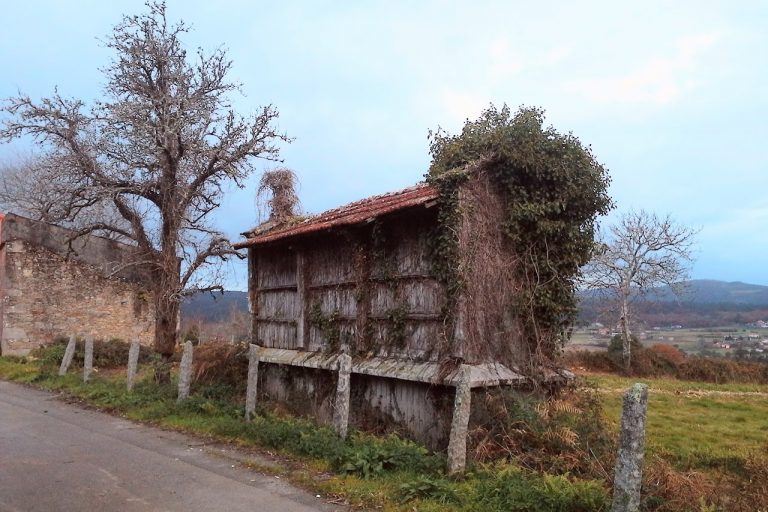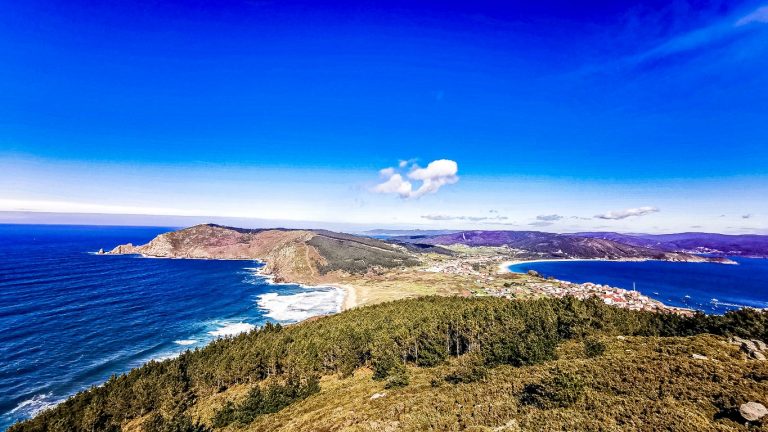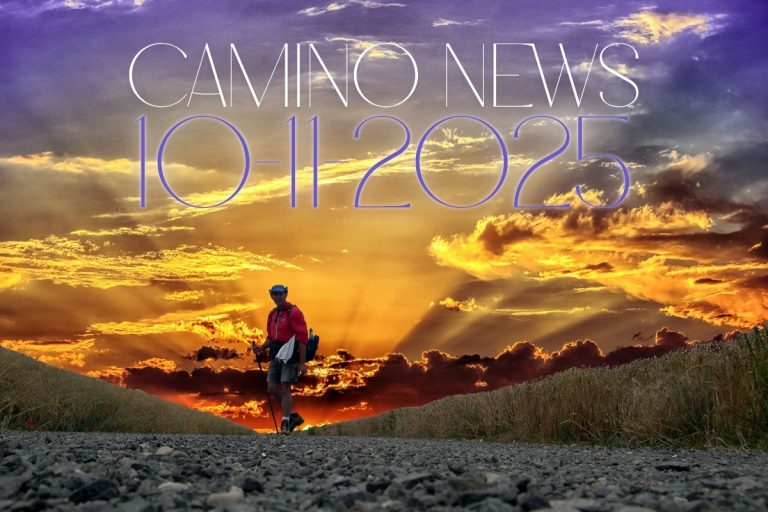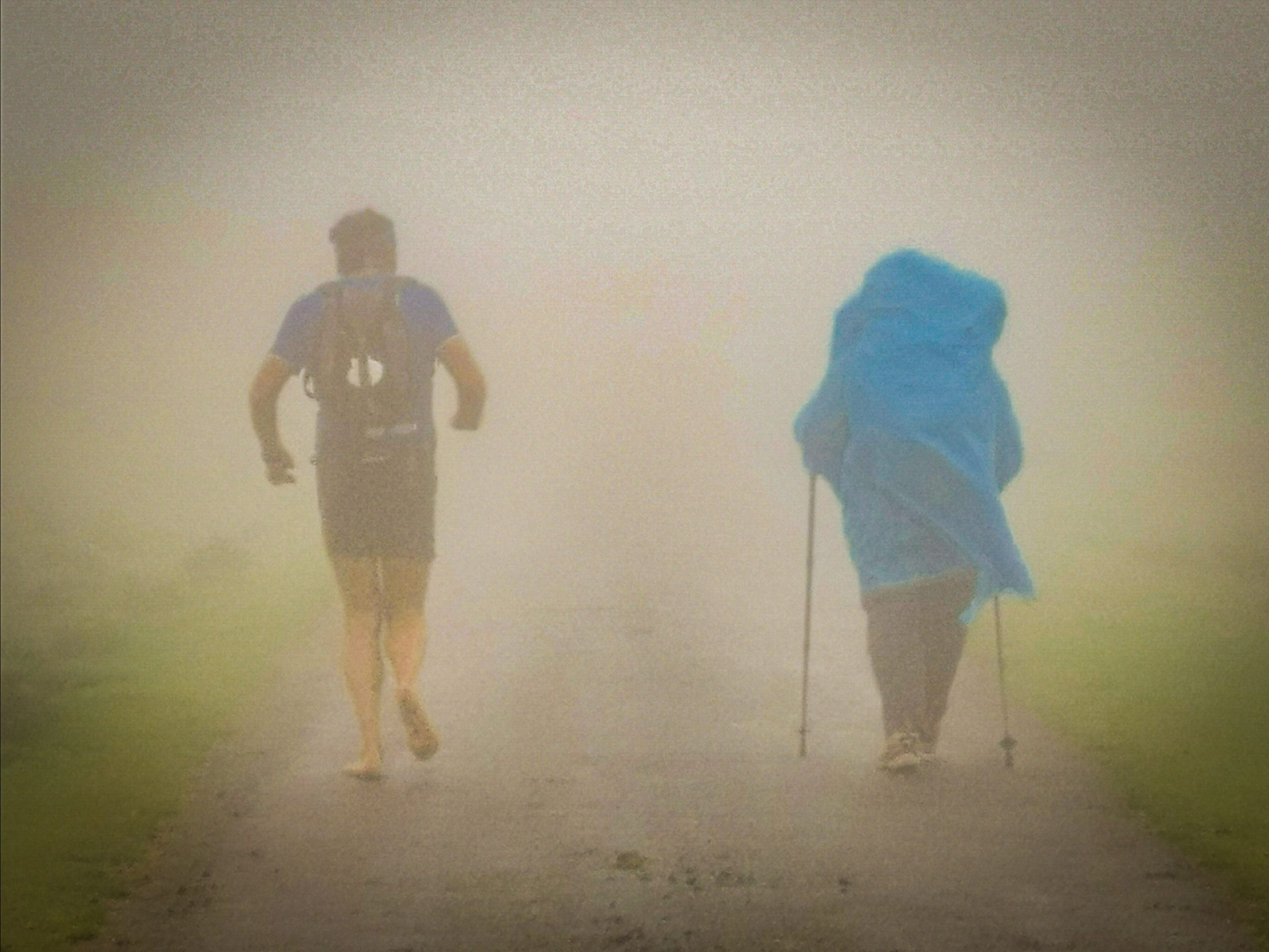
A Network of Paths That Weaves Through Europe
There is not just one St. James Way. There is an ancient web of trails stretching like lifelines across the Iberian Peninsula – and far beyond, into the very heart of Europe. Some begin in the scorching south of Andalusia, where the Mozarabic Way takes its first steps in cities like Málaga, Granada, or Córdoba, accompanied by the scent of orange blossoms, the play of shadows beneath Moorish arches, and the clinking of glasses in street cafés. Here, your morning starts with crispy Pan con Tomate, your midday with olives, Manchego, and spicy Chorizo – and always a bold glass of red wine.
Further north, the Via de la Plata carries you through the open vastness of Extremadura – through cork oak groves and fields that turn golden in the light of evening. In the villages, there is the smell of grilled Iberian ham and paprika sausage, and in old taverns, they serve you simple, honest stews. Eventually, you reach the quiet stretches of Castile and León, where Cocido Maragato nourishes pilgrims at long wooden tables before the green hills of Galicia open up a new world of mist, forest, and the scent of Caldo Gallego.
From the Very First Step at Your Own Door
The Way does not begin only where the official markers stand. It can start right at your own doorstep – whether in Hamburg, Vienna, Zurich, or a small village somewhere in Europe. Every step you take from there is part of the same centuries-old movement that carried pilgrims long before you. You walk through familiar streets, leave behind your town, your region – and with each kilometer, the face of the landscape changes: forests turn to fields, fields to hills, hills to mountains or coasts.
Along the way, you’ll discover that the path does not only lead through countries – it leads through entire worlds of living. You cross language boundaries, hear new dialects, taste unfamiliar foods, and learn to be carried by the hospitality that has always been extended to pilgrims. In the early days, the Way is still part of the world you know – but slowly, it becomes a bridge into the unknown.
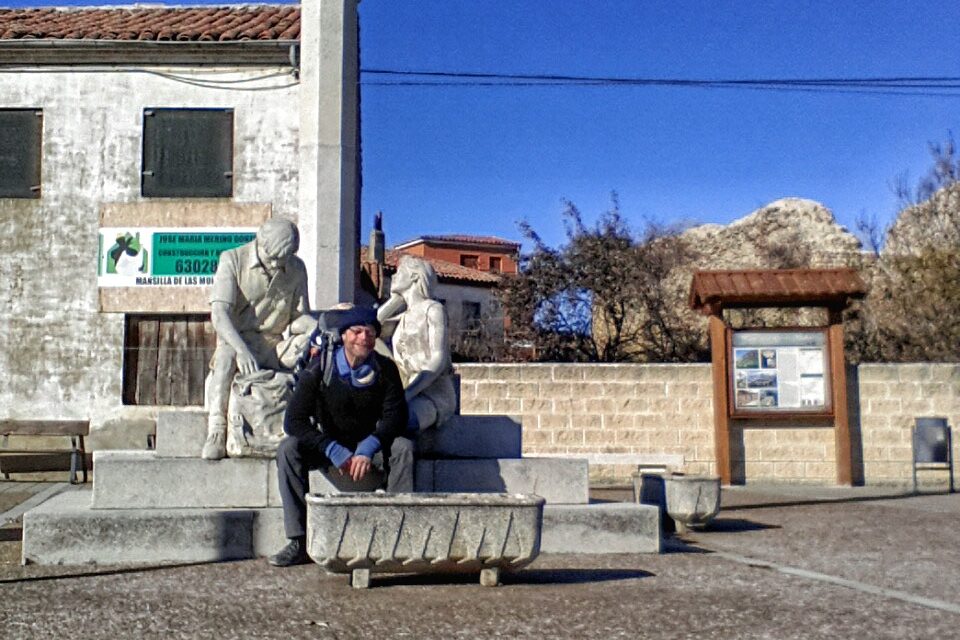
Those who walk in this way experience the depth of the Camino: from that first step still tethered to everyday life, to full surrender to the rhythm of walking. You feel your body adapt, your thoughts grow clearer, your burden become lighter – not only in your backpack, but in your heart. And when you finally reach Santiago, you don’t just carry 100 or 800 kilometers in your legs – you carry a whole continent in your memories. And perhaps it is exactly that long, unbroken path that makes your arrival feel so profoundly real.
The Far North – Coasts, Mountains, and Silent Valleys
The Northern Way runs like a ridgeline between the blue of the sea and the green of the mountains – rugged cliffs in the Basque Country, gentle meadows in Cantabria, lonely beaches and steep mountain passes in Asturias. In the Basque Country, Pintxos await you – little works of art made from bread, fish, vegetables, and cheese, accompanied by the sharp white wine Txakoli. In Asturias, a warm bowl of Fabada Asturiana comforts you at night, with Cidra poured from high into the glass.
In Oviedo, the oldest of all St. James Ways begins: the Primitivo. It leads you over rugged heights and into deep, secluded valleys where the wind whispers over mountain peaks, and the sky often feels so close you think you could touch it. The villages are small – sometimes only a handful of stone houses whose slate roofs glisten dark in the rain. Smoke curls from chimneys, and in the kitchens simmer stews prepared to the same recipe for generations.
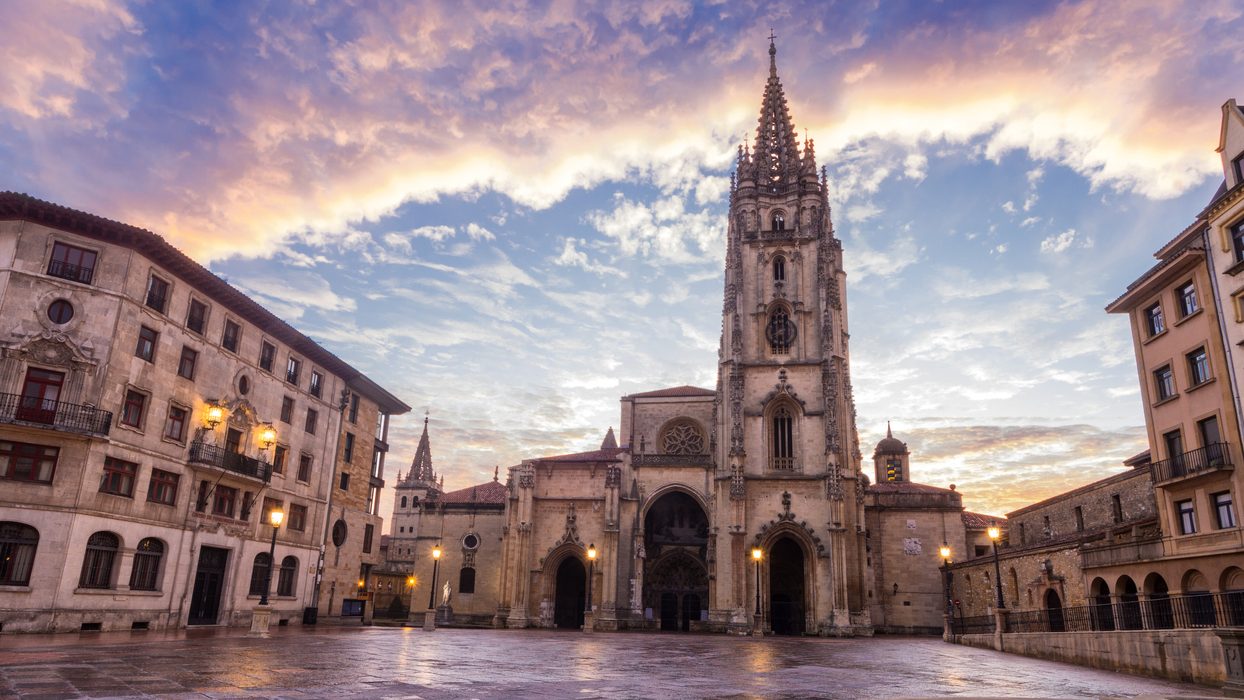
Those who seek the path of silence follow the Camino Olvidado, the “Forgotten Way”. It winds from the mountains of the Basque Country through Cantabria and León, past dense forests, clear rivers, and Romanesque bridges walked by traders, shepherds, and pilgrims for centuries. On this trail, you may meet more cows than people – and every encounter, every open village fountain, every greeting from a doorway carries a special weight.
From León, the Camino de San Salvador finally leads to Oviedo – a short but demanding path climbing steeply through the mountains. The views here have a clarity that borders on the surreal: snow-covered peaks in spring, lush pastures in summer, and an evening sky painted in copper and rose. Whoever walks this path knows at its end why people say: “He who visits the Savior sees the Lord; he who visits Santiago sees His servant.”
The South – Between Desert, Olive Groves, and Roman Legacy
In the heat of southern Spain begins the Mozarabic Way – a trail that sets out from cities like Málaga, Granada, or Córdoba, accompanied by the scent of orange blossoms, the shadow of Moorish architecture, and the trickle of fountains in the patios. Here, where the light is often dazzling and the days are long, you walk through silver-shimmering olive groves, across sun-bleached hills, and past Roman bridges whose stones still seem to echo with the hoofbeats of ancient caravans.
Today, it is even possible to begin the Camino even farther south – on African soil, in the Spanish enclaves of Ceuta and Melilla. From there, the path first winds through Moroccan-style alleys before crossing the strait to connect with the Mozarabic routes. A beginning that adds yet another chapter of history, culture, and perspective to the pilgrimage.
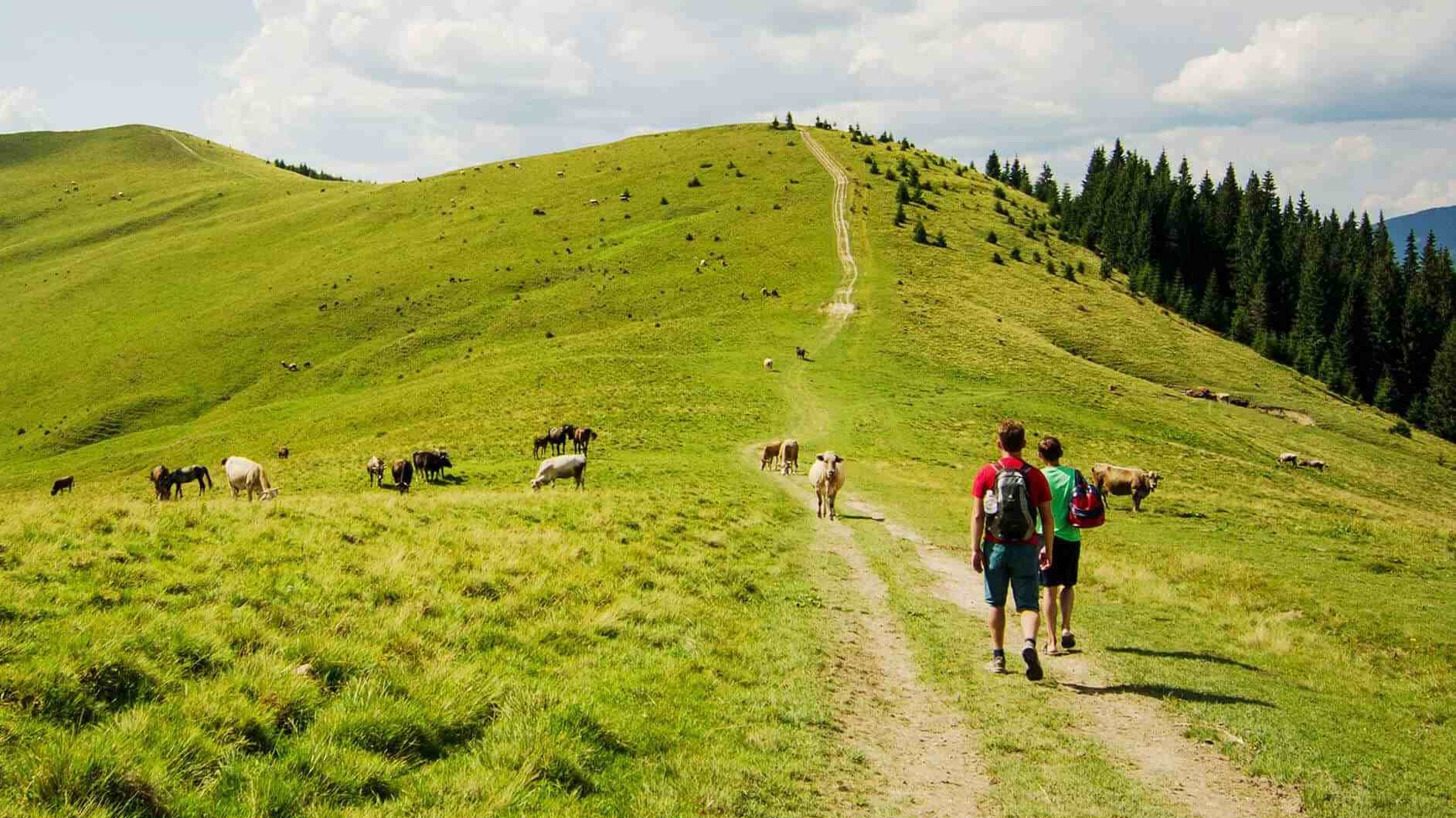
From Córdoba, the Mozarabic Way joins the Via de la Plata – an old Roman trade route that cuts straight through the open vastness of Extremadura. Here, the golden evening light glows on the stones of small villages, and the smell of Jamón Ibérico, paprika sausage, and freshly grilled lamb drifts through the air. In the distance, cork oaks silhouette against the sky, and storks stand motionless on rooftops. Farther north, the path leads into the quiet plains of Castile and León, past Roman milestones and medieval bridges, until it finally reaches the green hills of Galicia.
Even the Canary Islands have their own paths – separated from the mainland, yet part of the great pilgrimage family. On Gran Canaria, the Way leads from Maspalomas in the south across the mountain range to Gáldar, where a church is dedicated to Saint James. On Tenerife, it runs from Candelaria on the coast to Santiago del Teide – a route that unites volcanic landscapes, misty forests, and views of Mount Teide.
The South offers the pilgrim a blend of vastness, heat, ancient history, and the feeling of walking a route that has built bridges for centuries – between cultures, continents, and time itself.
The West – Portugal and the Ways of the Atlantic
In western Portugal, the Caminho Português and the Via Mariana follow ancient Roman roads through cities rich with azulejo art, past olive groves, pine forests, and sun-drenched vineyards. In the small markets, salt-dried cod (bacalhau), glistening sardines, juicy oranges, and hand-baked bread with a crackling crust pile high. On the coastal trails, the salty scent of the Atlantic mixes with the sweet aroma of freshly baked pastéis de nata, and sometimes, the cries of seagulls accompany you like a melody lining your steps. Evenings fade into taverns where Vinho Verde, strong Douro red, or sweet Port wash down the dust of the road – while a Fado singer wraps longing in sound.
Yet the West offers more than landscapes and culinary delights – it carries within it the mythical origin of the legend of the Apostle James. According to tradition, in the year 44 AD, two of his disciples arrived at the Galician coast near Padrón in a stone boat, bearing the Saint’s body. From there, the path first led to Fisterra, into the valley of Duio, where the legendary Queen Lupa reigned. At first, she opposed the disciples, but through a series of miracles – wild bulls tamed, mountains opening – she finally relented and helped with the onward journey.
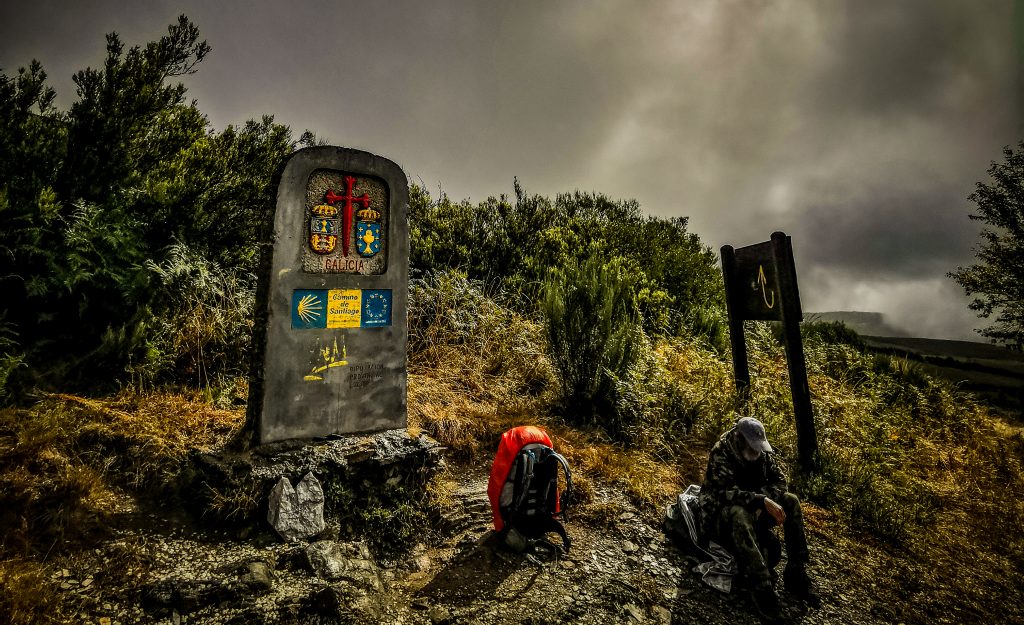
The route continued inland to the forest of Libredón, where the Apostle’s tomb was laid to rest – the very place where many centuries later Santiago de Compostela would rise. Those who walk the Portuguese Way today can feel this invisible line between sea and cathedral, between legend and the present. Each step here is also a step into a story older than the pilgrimage itself. For when the hermit Pelayo rediscovered the tomb around 812 AD – in the midst of growing religious wars in northern Spain – a new flow of pilgrims began. The tale of the young Charlemagne’s vow, that Europe should be Christian in his lifetime, is also woven into this history.
Pamplona, Vega de Valcarce, and so many other places along the Ways of St. James could tell endless stories of this. But enough digression – come, see for yourself, and marvel. Oh, and for those seeking forgiveness of sins, the next two Holy Years are already on the horizon: 2027 and 2032.
The East – From the Mediterranean to the Heart of the Peninsula
The Catalan and Valencian routes – the Camino Catalán, the Camino del Alba – call pilgrims from the Mediterranean shore. Here, the journey begins in the scent of pine forests, shimmering silver olive groves, and endless orange plantations, whose blossoms fill the air with an almost addictive freshness. The sun glitters on the sea as you pass ancient Roman walls, Moorish archways, and Gothic church towers.
In the towns, paella is stirred in great pans, steaming and full of colour – with saffron rice, seafood, or chicken and vegetables. In shaded squares, horchata is served with sweet fartóns, and in the evening the murmur of the streets fills the air while golden light falls through the alleys.
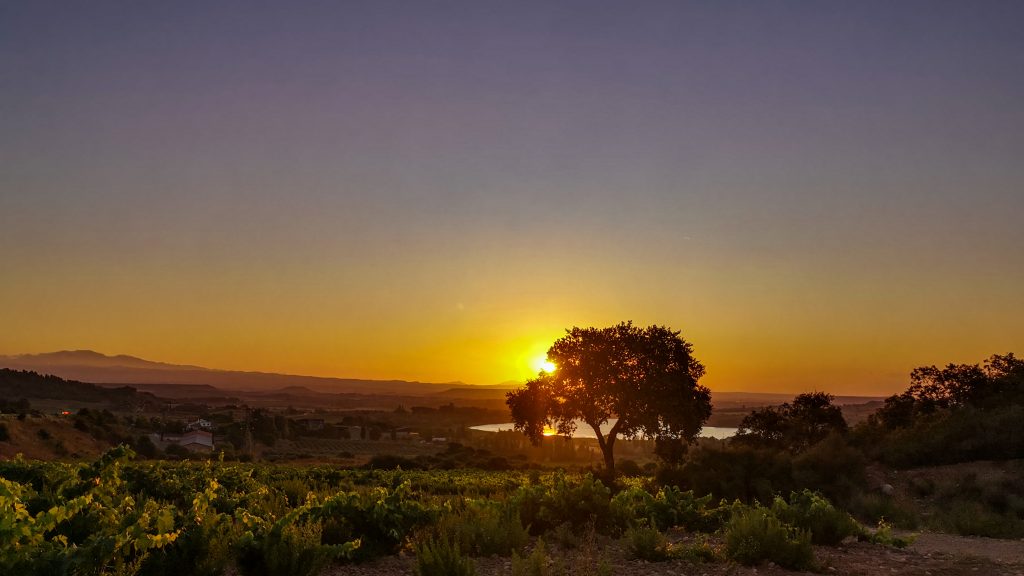
Later, these paths lead you through Gothic towns, past castles, over wide plains, and finally into the vineyards of La Rioja, where the scent of ripe Tempranillo grapes and roasted peppers accompanies the evening. Here, in Logroño, you meet the Camino Francés, and the flow of pilgrims becomes broader, denser, more alive.
There are several ways to join the Camino Catalán. You can fly to Barcelona – worth adding at least an extra day to visit the Sagrada Família Cathedral and walk among Gaudí’s works. Or you can fly to Mallorca, walk the Camino de Mallorca to Palma de Mallorca, breathe in the island life and the salty sea air – and let the first impressions settle quietly on the ferry to Barcelona, as the horizon slowly draws near.
The Heartbeat of the Camino – The Francés
For many, the Camino Francés begins in Saint-Jean-Pied-de-Port in the French Basque Country, where the scent of baguette and freshly baked Gâteau Basque drifts through the streets. From there, it climbs over the Pyrenees into Navarra, through fields and vineyards, past towns like Pamplona, where tapas bars are alive with chatter. It runs through the golden vineyards of La Rioja, over the endless Castilian Meseta, where the land is so wide the sky seems greater still.
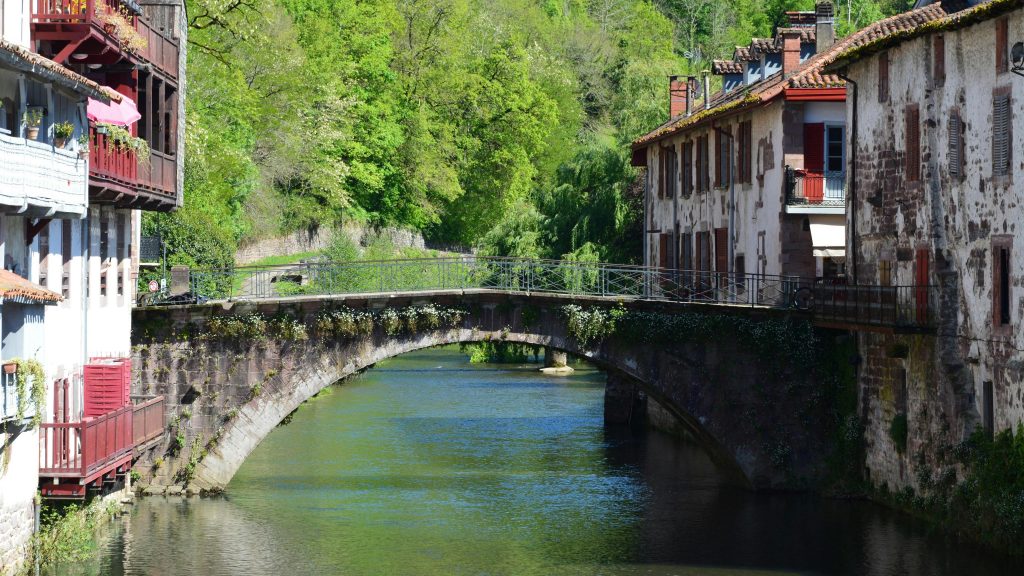
In the villages, the air smells of grilled lamb, fresh bread, and the dust of the day. The path continues into the fertile Bierzo, where chestnuts, Mencía wine, and the warmth of the people accompany you. The climb to O Cebreiro rewards you with views of seas of mist and round stone huts, before Galicia greets you with pulpo á feira, wood-fired bread, and the music of the Galician language.
The Camino Inglés – Short but Intense
The Camino Inglés begins in the Galician ports of Ferrol or A Coruña – two places where the sea feels like an open door to the land. Here, ships from England, Ireland, and Scandinavia once docked, carrying not only goods but pilgrims from northern Europe, who came to walk the long road to Santiago.
From the quays and streets of these towns, the path heads inland, yet the sea lingers at your back – a salty taste on the lips, the echo of waves in your thoughts. In the morning, mist hangs over the bays, gulls circle overhead, and the clinking of boat masts sounds like a gentle farewell.
The route winds through gentle hills, past small villages whose stone houses bear the mark of Atlantic winds. Old bridges span clear streams, eucalyptus and chestnut forests alternate. In the villages, you might be offered a slice of empanada gallega – filled with tuna, meat, or seafood – and sometimes someone will hand you a glass of Ribeiro or Mencía, as if they had been waiting for a pilgrim to pass.
Only a few stages separate the start from the arrival in Santiago, and yet each kilometre holds the richness of many other routes. The Camino Inglés is like a concentrated extract of the pilgrimage experience: silence, fellowship, history, and the feeling that every step has weight. Those who walk here live the Camino in its essence – short, yet deep, like a glance into a mirror where both sea and cathedral are reflected.
More Than Just Sarria – The Camino From Your Own Doorstep
The Camino does not have to begin in Sarria, nor end after 100 kilometres. It can start right at your own front door – through cities, fields, and forests, across borders, through landscapes that change from day to day. Every step is part of the whole. The last 100 kilometres are only a small extract – to feel the way in its full depth, you must take your time, walk slowly, absorb each region, each language, each encounter.
Those who set out have often thought for a long time about why they want to walk this path. Some carry grief or a decision, others the desire for a new beginning, or simply the joy of being on the way. Many pack a notebook or a camera to capture what they see and feel along the road. Yet in their backpacks there is often something unseen – memories that hurt, thoughts that return again and again.
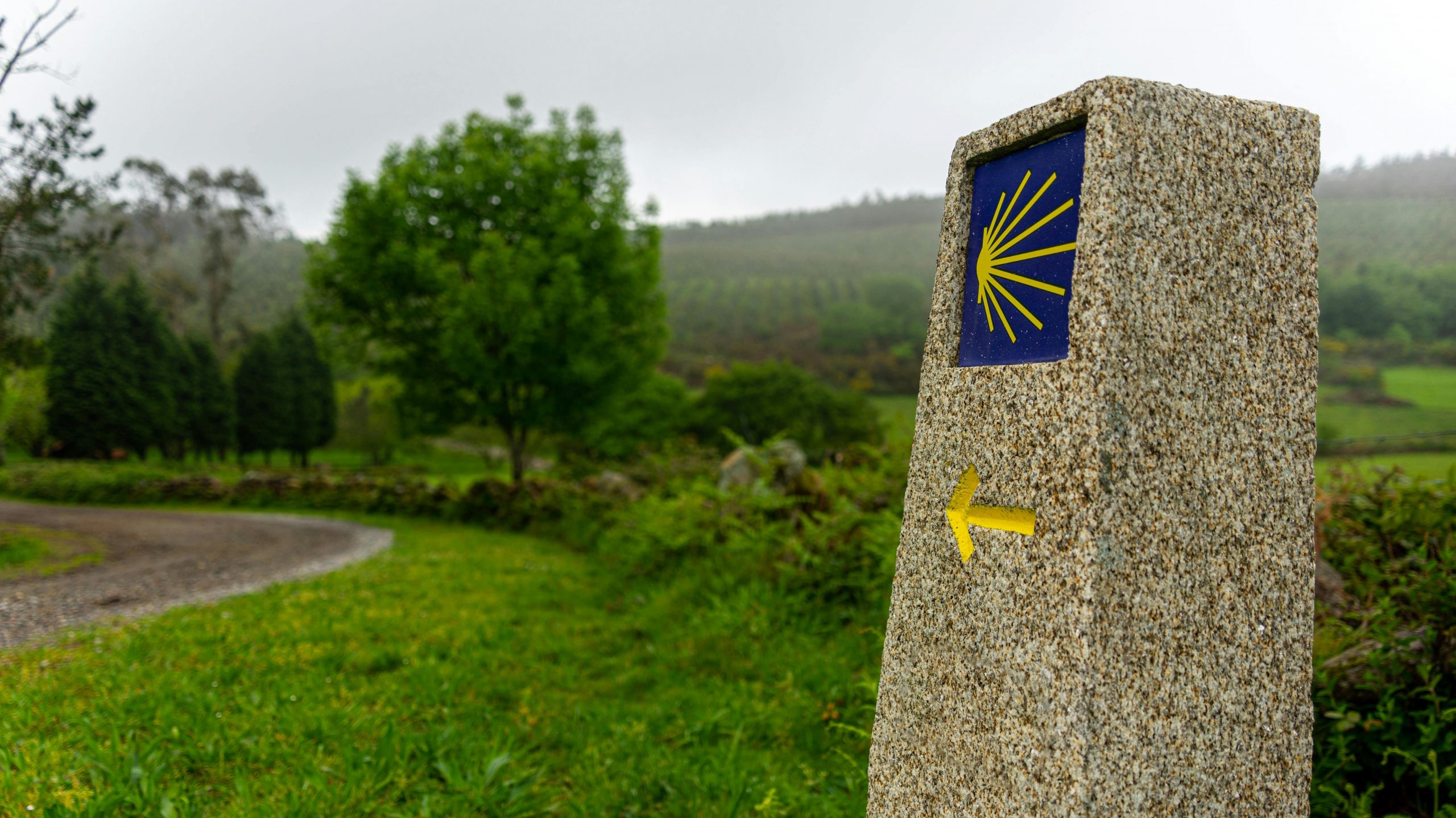
Some pilgrims dream of gaining distance – as if they could place a sea between themselves and their past. They want to leave behind what was heavy, to move away from things they no longer wish to speak of. They long for a place where the sun is warm, even if it is winter at home. A place where they can be alone, and without the shadow of the past, start anew. Perhaps, they hope, the moment will come when forgiveness becomes possible.
Until then, each step is a little more distance, each horizon a little farther away. The Camino can become that ocean – not of water, but of days and kilometres, of encounters, of silence, and of wind. An ocean between you and all that was.
Santiago – Climax and Prelude to the Farewell
Santiago de Compostela is not just a destination, but the point where all roads, all voices, and all stories converge. The final steps lead you over ancient cobblestones, past streets filled with music, laughter, and the languages of the whole world. On the Praza do Obradoiro, the view opens to the cathedral – immense, dignified, a mosaic of stone and time. Here stand pilgrims from every direction, embracing, weeping, laughing, sitting silently in the light.
Those who attend the Pilgrim’s Mass witness the mighty swing of the Botafumeiro, soaring through the nave, spreading clouds of incense into the air and the scent of centuries-old ritual. Beneath the arches, songs and prayers echo, and for a moment it seems as if everything – the hardships, the joys, the encounters – is held within this space.

Yet often, perhaps, the most beautiful part still lies ahead. When the first cheers fade, the call of the sea beckons – up into the hills, out to the cliffs, where the horizon does not end, but opens.
The Way to the Sea – Fisterra and Muxía and Beyond
From Santiago, many continue to Fisterra, the “end of the world,” where the sun sinks into the Atlantic and the colours of evening swallow the horizon. Others go to Muxía, where the surf crashes against the rocks and the pilgrimage church of Nosa Señora da Barca keeps watch over the sea. Here, life tastes of sea and wind: pulpo á feira, scallops, hake – accompanied by Albariño, Godello, Ribeiro, or Mencía.
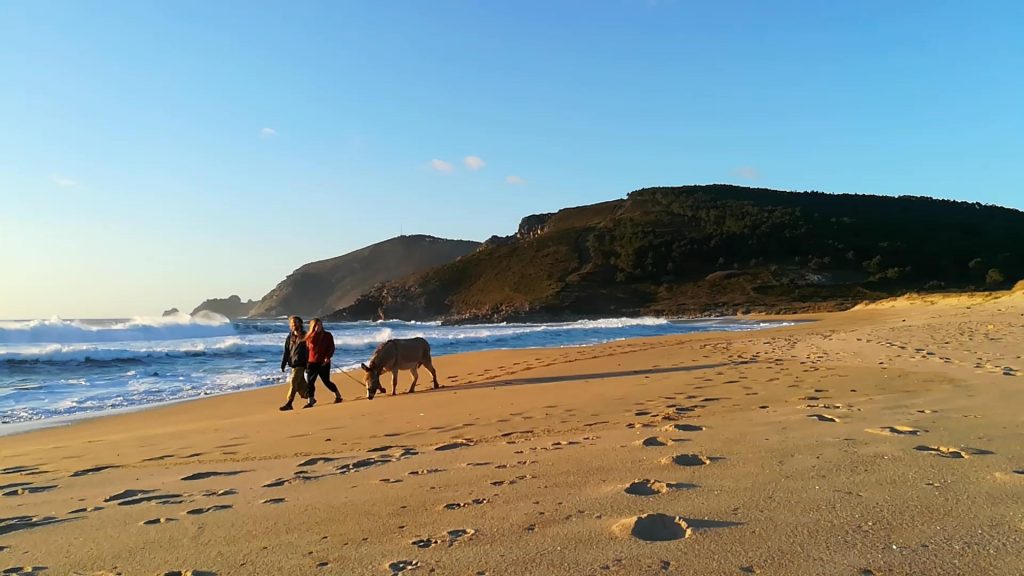
These last kilometres are more than a conclusion. They are an invitation to end the Camino with a feast of light, salt, and space. Or even to begin something new with the return journey. For where the path ends inevitably at the cliffs of Cape Fisterra, you must turn back. And perhaps not only to the village and harbour, but beyond. Gathering stories to tell at home, as in old times – only now with modern means.
The Lesson of Slowness
All the routes – whether they lead through hot plains, cool forests, windswept coasts, or narrow old-town alleys – share one thing: they teach slowness. They show what it means to be welcomed as a stranger in unfamiliar regions, and how the unfamiliar becomes familiar. Water from a village fountain, bread in the morning, a glance full of warmth – these moments remain. And they deserve to be told, so that those who stay at home, and cannot walk it themselves, may know that the world is made of so much more than posed selfies.
The beautiful and the ugly are both part of it – like the asphalt factories near Larrasoaña in Navarra, or between Hospital and Cee in Galicia. Or the factory haze on the outskirts of Ponferrada, often visible from El Acebo down in the valley, and the fresh sea breeze along the Algarve in Portugal, the Costa da Morte in Galicia, and along the coasts of Asturias, Cantabria, and Navarra in the north.
The First Step
And one day, perhaps in the middle of walking, perhaps at the sight of the cathedral, you will understand: it was not Santiago that changed you – it was the way there. Every step, every encounter, every day you kept going when you could have stopped.
The call of all roads is quiet, but persistent. Perhaps you already hear it. Perhaps it is time to take your first step.
Reflection
The Camino is more than a path of stone, earth, and signposts. It is a mirror that shows you not only landscapes, but yourself. It teaches patience as the kilometres disappear beneath your feet, and grants clarity when your mind is empty and your heart wide. Every section – whether coast, mountains, plains, or city – carries its own melody, and together they weave a song that will stay with you long after you arrive.
Those who walk the Camino realise: the true journey does not end in Santiago – it begins there anew, in everyday life, which will never be the same again. What would you see, feel, or decide differently if you took the time not only to walk the path, but to truly live it – step by step, without shortcuts?
If longing seizes you and the quiet call of the roads reaches your heart, do not wait for the perfect moment. Put on your shoes, tighten your backpack, and take the first step – whether from your front door, in Porto, Saint-Jean, or Ceuta. The map will fill as you go, the story you write with every kilometre yourself. The Camino does not wait – it goes on, whether you are part of it or not.
If you enjoyed this article but feel that important information is missing, write to me via the following contact form – in German, English, Spanish, Galician, or French. Your suggestion will be reviewed and, if appropriate, added or included in another article.
